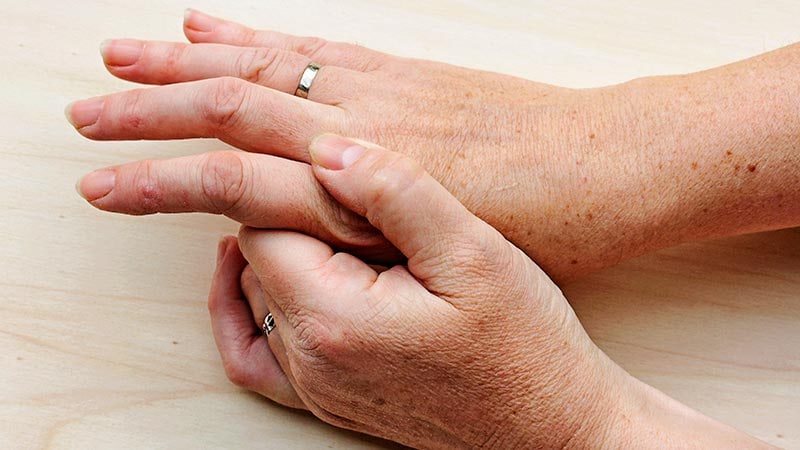Fitness
More Tender Than Swollen Joints Worsen Outcomes in Early RA

TOPLINE:
Having more tender than swollen joints is linked to worse patient-reported outcomes (PROs), particularly in pain interference, social participation, and fatigue, in patients with rheumatoid arthritis (RA).
METHODOLOGY:
- In early RA, understanding the impact of tender-swollen joint differences (TSJDs) on PROs across multiple domains of health-related quality of life is important to customize personalized therapeutic strategies.
- This study evaluated the impact of TSJDs on PROs over 1 year in 547 patients (mean age, 56 years; 70% women; mean symptom duration, 5.3 months) with early RA across 18 centers in Canada between January 2016 and August 2022.
- TSJDs were assessed for 28 joints (six large and 22 small) at baseline and at 3-, 6-, and 12-month visits using the PRO Measurement Information System (PROMIS-29), covering seven domains of health. Higher PROMIS T-scores indicated better health outcomes.
TAKEAWAY:
- A one-point increase of TSJD was significantly associated with worse PROMIS T-scores in physical function (adjusted regression coefficient [β], −0.27; 95% CI, −0.39 to −0.15) and social participation (β, −0.34; 95% CI, −0.50 to −0.19).
- A one-point increase in TSJD was also linked to worsened PROMIS symptoms in pain interference (β, 0.49), fatigue (β, 0.34), sleep problems (β, 0.29), anxiety (β, 0.23), and depression (β, 0.20).
- Large-joint TSJD was particularly associated with worse PROs than small-joint TSJD.
- The sensitivity analysis validated the reliability of the primary findings regarding the association between joint counts and PROs evaluated by PROMIS-29, even when accounting for C-reactive protein levels in various scenarios or assumptions.
IN PRACTICE:
“Patients with more tender than swollen joints may experience worsening of all seven domains of health, especially pain interference, social participation, and fatigue. Rheumatologists should be alerted to their patients with early RA having more tender than swollen joints, particularly in large joints,” the authors wrote.
SOURCE:
The study was led by Charis F. Meng, MD, Division of Rheumatology, Hospital for Special Surgery, New York. It was published online on May 1, 2024, in Journal of Clinical Rheumatology.
LIMITATIONS:
The study was observational with missing data, which could have impacted the reliability of the results. Most participants were women and White individuals, which could restrict the generalizability of results. The absence of ultrasound for synovitis limited the clinical assessment of patients with RA for information beyond physical examination alone.
DISCLOSURES:
The study was supported and funded by the Inflammatory Arthritis Center and Division of Rheumatology at the Hospital for Special Surgery, New York. One author reported receiving funding from the National Institutes of Health.










